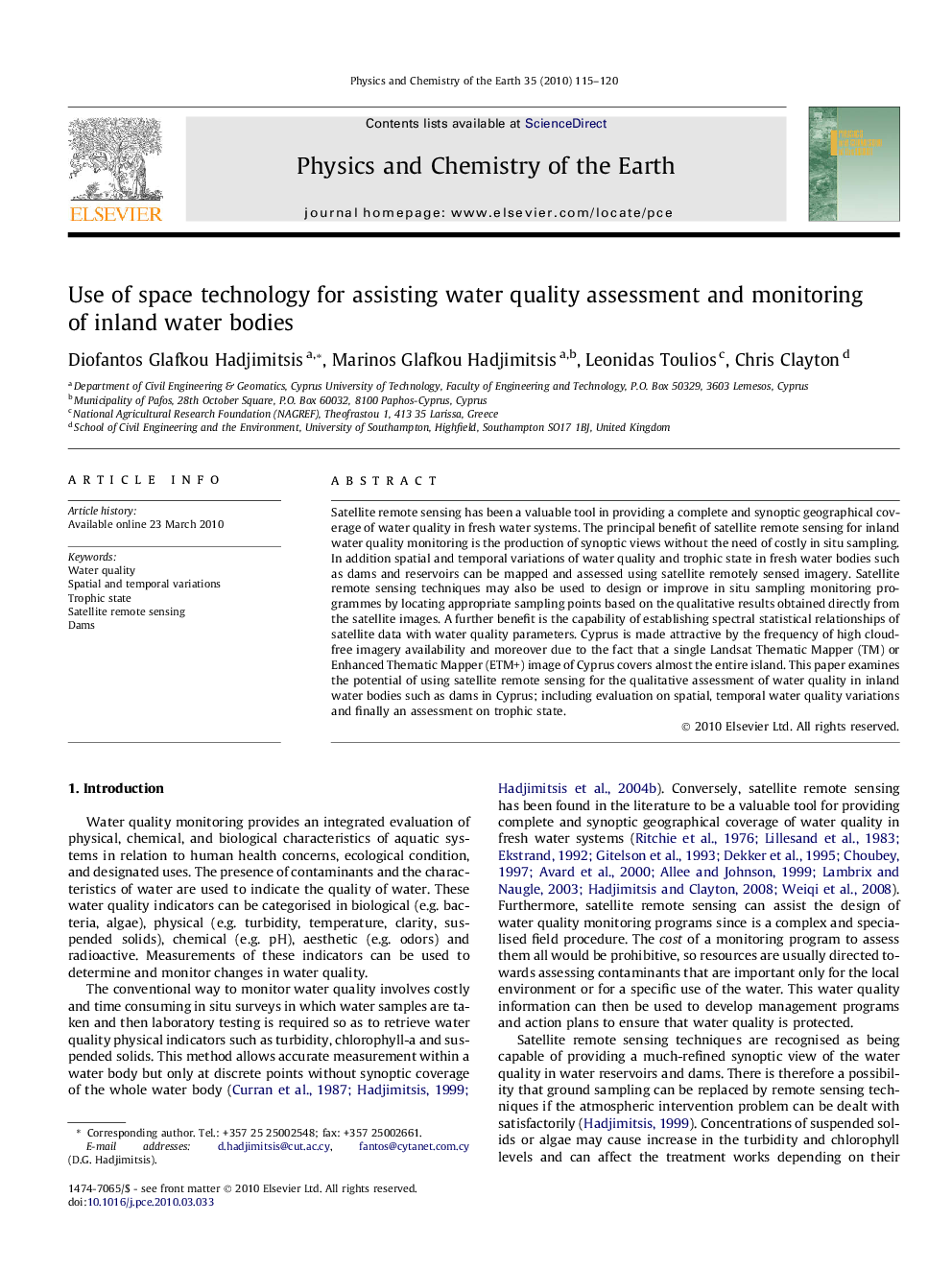| Article ID | Journal | Published Year | Pages | File Type |
|---|---|---|---|---|
| 4721431 | Physics and Chemistry of the Earth, Parts A/B/C | 2010 | 6 Pages |
Abstract
Satellite remote sensing has been a valuable tool in providing a complete and synoptic geographical coverage of water quality in fresh water systems. The principal benefit of satellite remote sensing for inland water quality monitoring is the production of synoptic views without the need of costly in situ sampling. In addition spatial and temporal variations of water quality and trophic state in fresh water bodies such as dams and reservoirs can be mapped and assessed using satellite remotely sensed imagery. Satellite remote sensing techniques may also be used to design or improve in situ sampling monitoring programmes by locating appropriate sampling points based on the qualitative results obtained directly from the satellite images. A further benefit is the capability of establishing spectral statistical relationships of satellite data with water quality parameters. Cyprus is made attractive by the frequency of high cloud-free imagery availability and moreover due to the fact that a single Landsat Thematic Mapper (TM) or Enhanced Thematic Mapper (ETM+) image of Cyprus covers almost the entire island. This paper examines the potential of using satellite remote sensing for the qualitative assessment of water quality in inland water bodies such as dams in Cyprus; including evaluation on spatial, temporal water quality variations and finally an assessment on trophic state.
Related Topics
Physical Sciences and Engineering
Earth and Planetary Sciences
Geochemistry and Petrology
Authors
Diofantos Glafkou Hadjimitsis, Marinos Glafkou Hadjimitsis, Leonidas Toulios, Chris Clayton,
